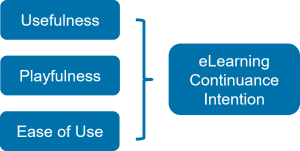
Motivation has been and continues to be a widely-studied area across many of life’s domains. People are keen to know ways to move themselves or others into action. Motivation is important in many areas such as schools, workplaces, sporting teams and education just to name a few.
What is motivation?
Motivation is the energising force that initiates and sustains behaviour and is valuable because it produces results (Ryan and Deci, 2000).
Numerous motivation theories focus on the amount of motivation, with a larger quantity said to result in the achievement of goals. But it’s not the level of motivation – how much – it’s the type of motivation that’s important.
Self-Determination Theory (SDT) is an empirical theory of motivation developed by Edward Deci and Richard Ryan. SDT is a macro theory of human motivation and personality that looks at people’s inherent growth tendencies and innate psychological needs. It is concerned with the motivation behind choices people make without external influence and interference. SDT focuses on the degree to which an individual’s behaviour is self-motivated and self-determined. SDT has been researched over many years and across numerous contexts.
SDT maintains that there’s distinct types of motivation and it’s the extent to which they are either controlling of behaviour or allow autonomy. Research has found that the type or quality of motivation is more important in predicting successful outcomes than the amount of motivation.
Underpinning SDT is that people require the satisfaction of three basic psychological needs:
- Autonomy – a sense of being in control. Deci and Ryan stated that to be autonomous does not mean to be independent. It means having a sense of free will when doing something or acting out of our own interests and values.
- Competence – a sense of being able to do something. The need for competence means the desire to control and master our environment and outcome. We want to know how things will turn out and what the results are of our actions.
- Relatedness – a sense of being associated or connected with others. Our actions and daily activities involve other people and through this, we seek the feeling of belongingness.
Contexts that satisfy these needs will support people’s inherent activity and promote more optimal motivation resulting in positive behavioural outcomes. In contrast, contexts that hinder these needs will result in decreased motivation. Autonomy and competence are the more dominant needs in terms of satisfaction. Relatedness is still important but not to the same extent.
Conditions supporting the individual’s experience of autonomy, competence, and relatedness are argued to foster the most volitional and high quality forms of motivation and engagement for activities, including enhanced performance, persistence, and creativity. We should think about how we can help satisfy people’s psychological needs in an online environment.
Generally, motivation is split into two types, firstly intrinsic motivation which Ryan & Deci (2000) define as:
doing of an activity for its inherent satisfactions rather than for some separable consequences
An individual is intrinsically motivated to do something when he/she likes what they are doing. They aren’t looking to gain anything from the activity they enjoy.
Extrinsic motivation on the other hand as defined by (Deci & Ryan, 1985; Ryan & Deci, 2000) is:
a construct that pertains whenever an activity is done in order to attain some separable outcome.
So, a person is extrinsically motivated when they perform the activity to receive something in return.
SDT proposes that extrinsic motivation can vary in the degree to which it’s either controlling of behaviour or allows autonomy. These types of extrinsic motivation sit on what is called the Self-Determination Continuum:
- External regulation – is performing a task to receive a reward or avoid punishment.
- Introjection – is performing a task to avoid feeling guilty or to please someone else.
- Identification – the person is starting to identify with the task e.g. improve job performance.
- Integration – close to intrinsic motivation but there’s still a separable outcome e.g. preparing for a future job role.
The more motivation is internalised, the more it’s improved. In an online environment, we can help to internalise motivation by satisfying the three psychological needs.
In the online learning space, motivation is important because often people are taking a course by themselves. So, let’s look at what the research has found when looking at SDT and learning online. Chen and Jang (2010) found that providing contextual support for autonomy and competence for students studying an online course positively affected the satisfaction of their psychological needs. The supports included giving students choice and options and giving clear instructions about completing tasks.
Roca and Gagne (2008) investigated whether SDT played a role in the acceptance of eLearning via the Technology Acceptance Model (TAM). According to TAM, people are more likely to continue to use technology if three areas are met:
- Usefulness – the degree to which a person believes the tech would enhance his/her job performance.
- Playfulness – the experience of interacting with the technology.
- Ease of use – the degree to which a system is free of physical and mental effort, easy to use, intuitive.
According to the TAM model, the most important determinant of the likelihood that someone will continue to use technology is their attitude which is a combination of usefulness and ease of use. They found that people were more willing to continue with eLearning if they also feel autonomous and competent because these needs influenced their level of motivation to continue. Building modern looking and easy to use interfaces can assist people in continuing to use technology.
Here’s some more suggestions for satisfying psychological needs in an online environment:
Autonomy
- Let people make meaningful choices that have consequences.
- Provide more than one way to reach the end goal.
- Allow users to customise their environment.
Competence
- Make the goals clear and structured.
- Give people time to develop competence.
- Link progression to level of competence.
- Increase the difficulty as the user progresses.
- Provide constant feedback and support (before, during and after).
- Recognise achievement.
Relatedness
- Provide areas for interaction and discussion with others.
- Provide opportunities for collaboration.
- Be available and answer questions from participants in a timely manner.
What do you do or have you done, to support the three psychological needs in online learning?
References
Chen, K-C and Jang, S-J. (2010) Motivation in online learning: testing a model of self-determination theory. Computers in Human Behaviour. 26, 741-752.
Deci, E. L and Ryan, R. M. (2000) The “what” and “why” of goal pursuits: human needs and the self-determination of behaviour. Psychological Inquiry. 11(4), 227-268.
Roca, J. C. and Gagne, M. (2008) Understanding e-learning continuance intention in the workplace: a self-determination theory perspective. Computers in Human Behaviour. 24, 1585-1604.
Ryan, R. M. and Deci, E. L. (2000) Intrinsic and extrinsic motivations: classic definitions and new directions. Contemporary Educational Psychology. 25, 54-67.


